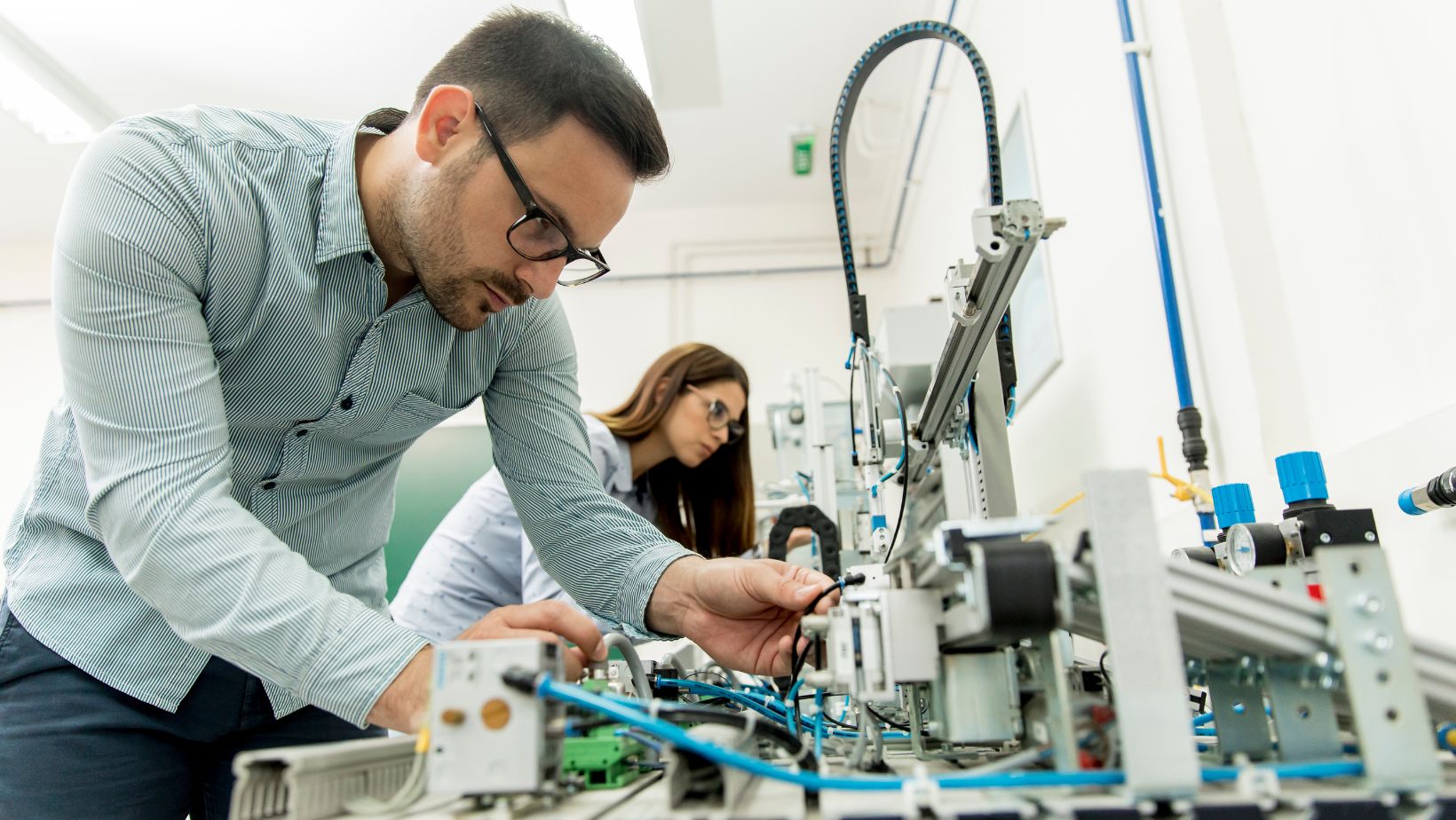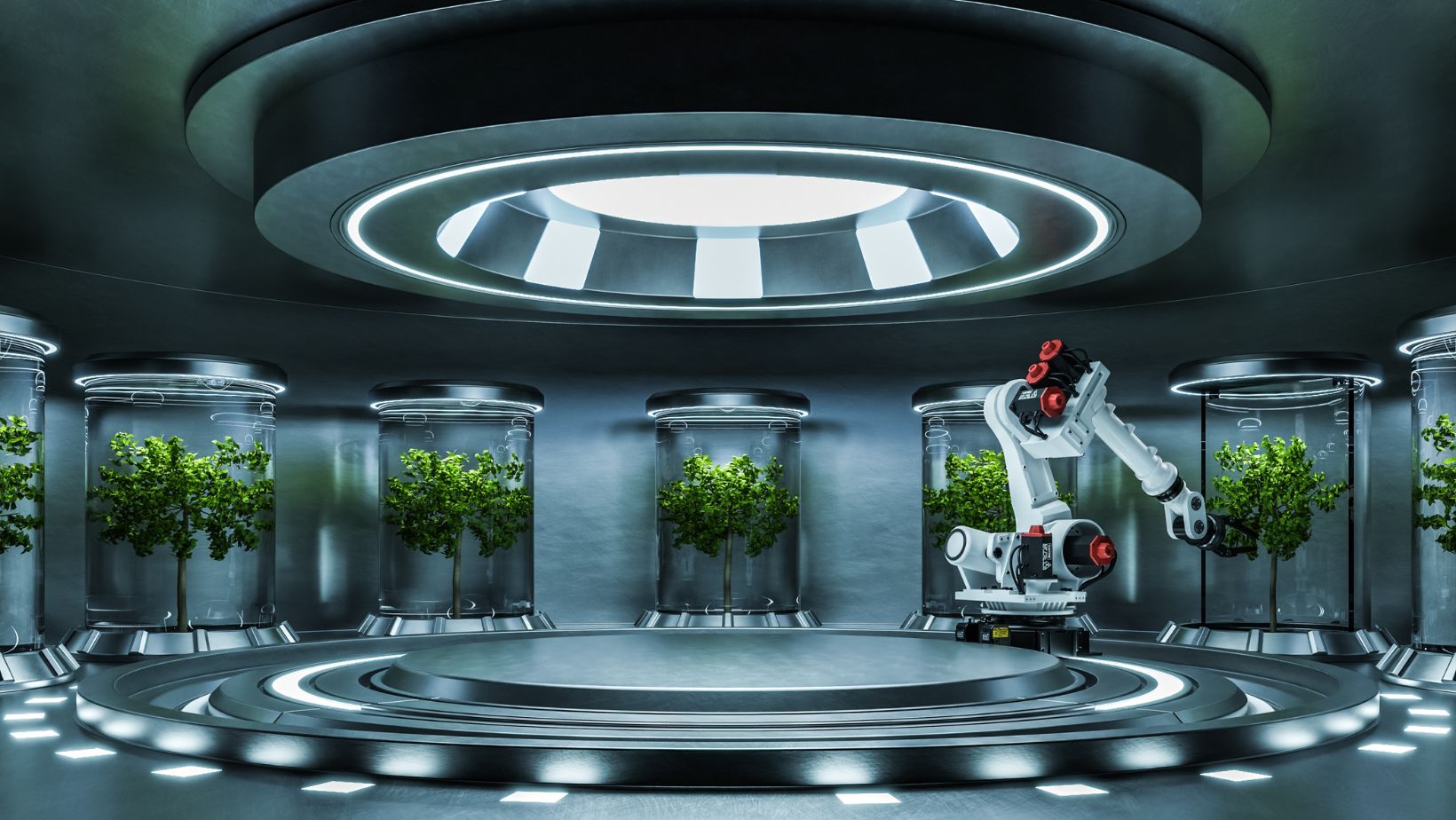Key Takeaways
- Definition and Role: Robotics labs are specialized workspaces dedicated to the design, development, and testing of robotic systems, playing a pivotal role in modern technological innovation.
- Interdisciplinary Collaboration: These labs encourage teamwork among diverse fields, such as mechanical engineering, computer science, and artificial intelligence, driving progress and creativity.
- Key Components: Essential elements of robotics labs include hardware (sensors, actuators, chassis) and software (operating systems, simulation tools), facilitating effective research and development.
- Research Areas: Robotics labs explore critical domains like autonomous systems and human-robot interaction, focusing on creating intelligent robots that work independently and enhance human capabilities.
- Notable Innovations: Robotics labs have led to significant advancements including DARPA’s disaster response robots and Boston Dynamics’ Spot, impacting sectors like healthcare and manufacturing.
- Future Trends: Emerging technologies such as AI, 3D printing, and IoT are shaping the future of robotics labs, alongside anticipating job growth in related roles such as robotics engineers and data scientists.
In a world increasingly driven by technology, robotics labs stand at the forefront of innovation. These dynamic environments foster creativity and experimentation, allowing engineers and researchers to design, build, and test robots that can transform industries and everyday life. From autonomous drones to robotic prosthetics, the possibilities are endless.
Robotics labs not only advance technical knowledge but also inspire collaboration among diverse fields, blending mechanical engineering, computer science, and artificial intelligence. As they push the boundaries of what’s possible, these labs play a crucial role in shaping the future of automation and enhancing human capabilities. Exploring the inner workings of a robotics lab reveals the exciting potential that lies ahead.
Robotics Lab
Robotics labs play a crucial role in fostering innovation and experimentation in robotic technologies. These environments enable the development and evaluation of advanced robotic systems across various applications.
Definition and Purpose
A robotics lab refers to a specialized workspace designed for creating, testing, and refining robotic systems. Its primary purpose includes facilitating hands-on experimentation, enabling collaboration among interdisciplinary teams, and providing access to advanced tools and technologies. Robotics labs support the full spectrum of robot development, from conceptual design to rigorous testing and iteration.
Importance in Modern Technology
Robotics labs significantly contribute to modern technological advancements in several ways:
- Innovation: Robotics labs lead in inventing new technologies, enhancing capabilities in automation.
- Research: Robotics labs generate valuable insights applicable in numerous fields, including healthcare and transportation.
- Collaboration: Robotics labs unify experts from various disciplines, fostering teamwork that drives progress.
- Education: Robotics labs enrich educational programs by providing students with practical experience in robotics.
- Industry Growth: Robotics labs stimulate economic growth by promoting start-ups and entrepreneurship in robotics.
These elements underscore the essential function of robotics labs in shaping the future landscape of technology.
Key Components of a Robotics Lab

Robotics labs consist of essential elements that facilitate effective research and development. Two primary components are robotics hardware and robotics software.
Robotics Hardware
Robotics hardware encompasses the physical components that make up robotic systems. Key elements include:
- Sensors: Devices like cameras, LIDAR, and ultrasonic sensors collect data from the environment, allowing robots to perceive and interact with their surroundings.
- Actuators: Components such as motors and servos provide movement and control to robotic limbs and platforms.
- Chassis: The structural framework houses all other components, ensuring stability and support during operation.
- Power Supply: Batteries or other energy sources supply electricity to the entire robotic system, enabling functionality and mobility.
- End Effectors: Tools attached to the robot’s arms, such as grippers or welding torches, perform specific tasks relevant to the robot’s application.
Robotics Software
Robotics software refers to the programming and algorithms essential for controlling and operating robots. Key aspects include:
- Operating Systems: Middleware like Robot Operating System (ROS) provides a flexible framework for robot control and program execution.
- Simulation Software: Tools like Gazebo and V-REP enable testing and visualization of robotic systems in virtual environments, reducing development time and costs.
- Control Algorithms: Predefined code directs robot behavior, including navigation, task execution, and decision-making processes.
- Machine Learning Frameworks: Platforms such as TensorFlow and PyTorch allow the development of intelligent systems that improve through experience and data analysis.
- User Interfaces: Software solutions that facilitate user interaction provide monitoring capabilities, data visualization, and robot command interfaces.
With a well-equipped robotics lab, collaboration and innovation thrive, driving advancements in technology and automation.
Research Areas in Robotics
Robotics labs explore various research areas that drive innovations and applications within the field. Key domains include autonomous systems and human-robot interaction.
Autonomous Systems
Autonomous systems focus on robotics that operate independently in dynamic environments. This area encompasses the development of algorithms, sensors, and machine learning techniques. Examples include:
- Autonomous Vehicles: Robots designed for safe navigation on roadways, utilizing LIDAR and computer vision.
- Drones: Unmanned aerial vehicles that perform tasks like surveillance, agricultural monitoring, and delivery.
- Maritime Robotics: Underwater and surface robots used for exploration, environmental monitoring, and search-and-rescue missions.
Robotics labs play a crucial role in refining these technologies through simulations, field tests, and data analysis, contributing to enhanced reliability and efficiency.
Human-Robot Interaction
Human-robot interaction (HRI) examines the ways robots and humans communicate and collaborate. This area emphasizes intuitive design and user-centric approaches. Key aspects include:
- Assistive Robots: Devices that aid individuals with disabilities, providing support in daily activities.
- Social Robots: Robots designed for companionship or educational purposes, aimed at improving engagement and interaction quality.
- Collaborative Robots (Cobots): Systems that work alongside humans in industrial settings, enhancing productivity and safety.
Research in HRI addresses user feedback, emotional responses, and ethical considerations, ensuring robots augment human capabilities effectively and safely.
Notable Innovations from Robotics Labs

Robotics labs have produced numerous notable innovations, significantly advancing technology across various sectors. These innovations stem from intensive research and development, reflecting the collaborative efforts of interdisciplinary teams.
Breakthrough Projects
- DARPA Robotics Challenge: This project aimed to develop robots capable of assisting in disaster relief operations. Teams developed robots that navigate complex environments and perform tasks such as opening doors and shutting off valves. The competition accelerated advancements in mobility, perception, and human-robot collaboration.
- Boston Dynamics’ Spot Robot: Spot represents a leap in mobile robotic technology. This quadruped robot navigates diverse terrains autonomously and performs tasks ranging from inspection to delivery. Robotics labs contributed to Spot’s development by refining its navigation algorithms and enhancing its versatility.
- NASA’s Valkyrie Robot: Designed for space exploration, Valkyrie features advanced sensor systems that enable it to operate in extraterrestrial environments. Robotics labs across the country enhanced its adaptive capabilities and improved its autonomous decision-making processes, paving the way for future planetary missions.
- Healthcare: Robotics labs contribute significantly to the medical field with innovations like surgical robots, prosthetics, and rehabilitation devices. These advancements improve surgical precision, enhance patient outcomes, and assist individuals in regaining mobility.
- Manufacturing: Collaborative robots, or cobots, emerged from robotics labs to work alongside human operators. These robots enhance efficiency and safety on production lines by taking over repetitive or hazardous tasks, thereby improving workflow.
- Logistics: Autonomous drones and mobile robots developed in robotics labs optimize supply chain operations. They streamline processes such as warehouse automation, last-mile delivery, and inventory management, reducing costs and improving efficiency.
- Agriculture: Innovations in agricultural robotics increase productivity and sustainability. Labs develop robots for planting, harvesting, and monitoring crops. These robots utilize AI and machine learning to analyze data, leading to better resource management and higher yields.
Future Trends in Robotics Labs
Robotics labs are at the forefront of innovation, adapting rapidly to emerging technologies and evolving job markets. As the field of robotics advances, several key trends are shaping its future.
Emerging Technologies
Robotics labs increasingly adopt emerging technologies that enhance capabilities and applications.
- Artificial Intelligence (AI): AI integration allows robots to make autonomous decisions. This includes machine learning algorithms that enable adaptive learning based on real-time data.
- 3D Printing: Advanced 3D printing techniques streamline prototyping. This technology reduces costs and accelerates design iterations for robot components.
- Internet of Things (IoT): IoT devices enable interconnected robotics. This connectivity fosters real-time data exchange, enhancing coordination among multiple robots.
- Soft Robotics: Developments in soft robotics lead to flexible and adaptable robot designs. These robots interact safely in environments with humans, offering applications in healthcare and service industries.
- Quantum Computing: Although still nascent, quantum computing shows potential to dramatically improve computational capabilities for complex robotic applications, such as optimization and problem-solving.
Prospective Job Opportunities
The robotics sector anticipates significant job growth across various roles as technology evolves.
- Robotics Engineers: These specialists design and develop robotic systems. Expertise in mechanical, electrical, and software engineering is essential for this role.
- Data Scientists: Data scientists analyze large datasets generated by robots, optimizing performance and enhancing learning algorithms.
- AI Ethicists: As robots become more autonomous, AI ethicists address ethical considerations and societal impacts of robot deployment, ensuring responsible innovation.
- Research Scientists: Research scientists focus on pioneering robotics technologies and conducting experiments to further the field.
- Technical Sales Representatives: These professionals bridge the gap between technology and clients, requiring a deep understanding of robotics applications and solutions.
Robotics labs continue to evolve, fostering an environment rich in innovation and opportunities that reflect the rapidly changing landscape of technology and workforce needs.
Tech and Automation laboratory
Robotics labs are essential in shaping the future of technology and automation. By fostering collaboration among diverse fields and providing access to advanced tools, these labs drive innovation and research. They not only enhance human capabilities but also stimulate economic growth through new job opportunities.
As the robotics landscape continues to evolve, the integration of emerging technologies will further expand the horizons of what’s possible. The ongoing advancements in autonomous systems and human-robot interaction promise to redefine industries and improve quality of life. With their pivotal role in innovation, robotics labs will remain at the forefront of technological development for years to come.

